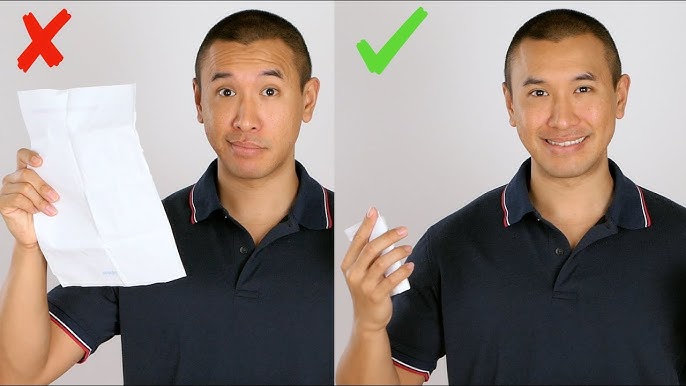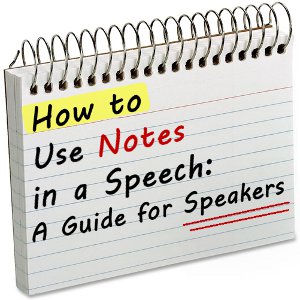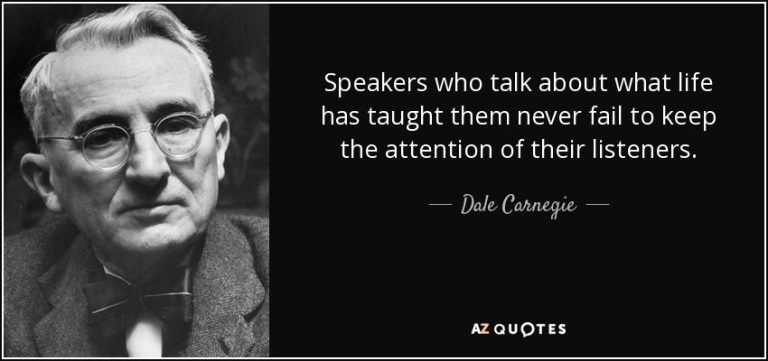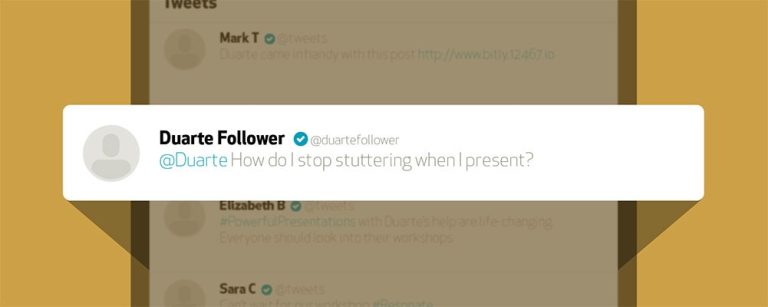How to Use Notes in a Speech? Master the Art Effortlessly
Imagine standing in front of an eager audience, ready to deliver your speech, but suddenly, your mind goes blank. It’s a common fear, isn’t it?
That’s where the magic of using notes comes into play. But how can you use notes in a speech effectively without losing your audience’s attention or appearing unprepared? You’re about to discover the secret to seamlessly integrating notes into your presentation, ensuring you remain confident and compelling.
Whether you’re a seasoned speaker or new to the stage, mastering this skill can transform your delivery from nerve-wracking to empowering. Stay with us, and you’ll learn practical tips and tricks that will not only keep you on track but also engage your audience like never before. Ready to captivate and conquer? Let’s dive in!
Choosing The Right Note Format
Choosing the right note format can impact your speech delivery. The format you select should enhance your confidence and clarity. It should also help maintain the flow of your presentation.
Index Cards Vs. Digital Devices
Index cards offer simplicity and reliability. They allow quick access to key points. You can easily shuffle them to adjust your speech order. Physical cards never suffer from battery issues.
Digital devices provide flexibility and convenience. They store extensive notes without the bulk. Tablets or smartphones can display notes in large fonts for easy reading. Be wary of technical glitches, though.
Bullet Points Vs. Full Sentences
Bullet points summarize ideas efficiently. They keep your thoughts organized and concise. Quick scanning helps maintain eye contact with the audience.
Full sentences offer detailed guidance. They provide a clear path if you lose track. This format helps in complex topics requiring precise language.
Organizing Your Notes
Organizing your notes helps you deliver a clear and engaging speech. Arrange key points logically to guide your audience smoothly through the presentation. Highlight important details to ensure nothing is overlooked.
Organizing your notes for a speech is crucial for delivering a coherent and impactful presentation. You might have gathered tons of information, but how you structure it will determine your success. With well-organized notes, you can guide your audience smoothly through your speech, emphasizing what truly matters.Logical Flow And Structure
A logical flow helps your audience follow your thoughts effortlessly. Begin by arranging your notes in a sequence that naturally progresses from one point to the next. For instance, start with a compelling introduction, followed by the main points, and conclude with a strong closing statement. Think about what you want your audience to remember and place those points strategically. Is there a story or example that ties everything together? Use it to maintain interest and drive your message home.Highlighting Key Points
Your speech should have clear highlights that stick with the audience. Focus on the core message and identify the main points you want to emphasize. Use bold text or different colors to make these points stand out in your notes. This visual cue will remind you where to focus your energy during the speech. Consider this: if someone only remembered one thing from your speech, what would you want it to be? Ensure that point is clear and highlighted in your notes. Keeping your notes organized and focused not only aids your delivery but also enhances your confidence on stage. Remember, your notes are your roadmap—make sure they lead you to your destination.Practicing With Notes
Practicing with notes can enhance your speech delivery. Notes serve as a guide, helping you stay focused. They ensure you cover all key points without missing any essential details. Effective practice with notes leads to a more confident and polished presentation. Below are techniques to rehearse and adjust your notes for optimal impact.
Rehearsing Techniques
Start by reading your notes aloud. This helps familiarize the content. Focus on the flow of ideas. Ensure each point connects logically. Practice in front of a mirror. Observe your gestures and expressions. This builds awareness of body language. Record your rehearsal on a device. Listen to your voice and tone. Adjust them for clarity and emphasis.
Adjusting Based On Feedback
Invite a friend to listen to your speech. Ask for honest feedback. Identify areas that need improvement. Adjust your notes accordingly. Focus on clarity and coherence. Ensure your message is easy to understand. Incorporate suggestions from others. This broadens your perspective. Refine your notes to enhance delivery. Repeated practice leads to mastery.

Credit: www.linkedin.com
Minimizing Note Dependency
Minimizing note dependency is crucial for delivering impactful speeches. Relying too heavily on notes can break the connection with your audience. You want to appear confident and engaged. The goal is to use notes as a guide, not a script. This approach allows for more natural delivery and helps maintain eye contact. Here, we explore strategies to help you reduce reliance on notes.
Memorization Strategies
Understanding your content is the first step. Break down your speech into key points. Focus on these main ideas rather than memorizing every word. Use mnemonic devices to aid memory. Storytelling can also be an effective tool. Stories are easier to remember and engaging for the audience. Practice your speech in chunks. This makes memorization less daunting and more manageable.
Building Confidence
Confidence grows with practice. Rehearse in front of a mirror. Watch your body language and facial expressions. Record your practice sessions. Listen to them and note areas for improvement. Feedback from friends can be invaluable. Simulate the speech environment to reduce anxiety. Deep breathing exercises calm nerves before speaking. Remember, confidence convinces the audience of your authority on the topic.
Enhancing Engagement
Using notes in a speech can significantly enhance audience engagement. The way you present your notes can make a big difference. It can keep your audience interested and involved. A well-delivered speech goes beyond just words. It taps into the power of non-verbal communication and interaction.
Eye Contact And Body Language
Eye contact builds a connection with your audience. It makes them feel valued and part of the conversation. Keep your eyes on the audience, not your notes. This can be challenging, but it is crucial for engagement. Use your notes as a guide, not a script.
Body language is another powerful tool. Stand tall and use open gestures. It shows confidence and invites engagement. Avoid crossing your arms or turning away. These actions can create barriers with your audience.
Interacting With The Audience
Interaction keeps the audience engaged. Ask questions to involve them in the discussion. This creates a two-way communication channel. Encourage responses and listen actively. It shows you value their input.
Use pauses to engage your audience. They give listeners time to absorb information. Pauses also give you moments to glance at your notes. This helps keep the speech flowing smoothly. Interaction and pauses make your speech more dynamic.
Handling Note Mishaps
Using notes in a speech helps keep thoughts organized and clear. Keep notes simple and easy to read. Glance at them only when needed to stay connected with the audience.
Handling note mishaps during a speech can be daunting. Whether you’re a seasoned speaker or stepping onto the stage for the first time, your notes are your safety net. But what happens when that net tangles or slips away entirely? Embracing the unpredictability of public speaking is key. Let’s dive into some strategies to deal with those unexpected moments when your notes don’t cooperate.Recovering From Mistakes
Mistakes with your notes can happen, but how you handle them matters more. If you lose your place or misread a note, pause and take a deep breath. This brief pause gives you a moment to regain your composure without drawing attention to the error. Consider sharing a quick anecdote to bridge the gap. A simple story related to your topic can buy you time to locate where you left off. This not only keeps your audience engaged but also humanizes your speech, showing that you’re adaptable and authentic.Improvisation Skills
Improvisation isn’t just for comedians; it’s a valuable skill for any speaker. If your notes fail you, lean on what you know. Talk about the core message of your speech using your own words. This can sometimes resonate more with the audience than a perfectly scripted speech. Ask yourself, what is the essence of your topic? Speak about it passionately and connect with your listeners. By doing so, you not only cover the missing content but also create a memorable moment that feels genuine. Have you ever faced note mishaps during a speech? How did you turn that challenge into an opportunity? Sharing your strategies can help others navigate similar situations with confidence.Evaluating Your Performance
Delivering a speech involves more than just speaking. Evaluating your performance is crucial for growth. Understanding what worked and what didn’t helps you improve. Let’s explore how you can assess your speech delivery.
Self-reflection Techniques
Self-reflection is a powerful tool. After your speech, think about your delivery. Did you engage the audience? Were your points clear? Consider your body language and tone. Did you maintain eye contact? Reflecting on these aspects is essential. Write down your thoughts. This helps in identifying areas for improvement.
Seeking Constructive Criticism
Feedback from others provides valuable insights. Ask trusted friends or colleagues for their opinions. Encourage them to be honest. What did they like? What could be improved? Constructive criticism is key. Use this feedback to refine your skills. Listening to others’ perspectives helps you grow.

Credit: www.youtube.com

Credit: speakandconquer.com
Frequently Asked Questions
Why Use Notes During A Speech?
Notes help keep your speech organized and structured. They act as a guide to ensure you cover all key points. Using notes can boost your confidence and minimize the chances of forgetting important details. They are especially useful for complex topics or lengthy presentations.
How To Organize Notes Effectively?
Start by outlining your main points and subpoints. Use bullet points or numbered lists for clarity. Highlight key phrases or ideas for quick reference. Keep your notes brief and concise to avoid reading directly. Use colors or symbols for emphasis to make them easy to navigate during your speech.
Can Notes Improve Speech Delivery?
Yes, notes can enhance speech delivery by providing a clear roadmap. They help maintain focus and pace, reducing nervousness. Notes ensure you stick to the topic and manage time effectively. By reducing the need for memorization, they allow you to engage more naturally with your audience.
What Should Be Included In Speech Notes?
Include essential points, key phrases, and statistics. Notes should cover introductions, conclusions, and transitions between sections. Add reminders for anecdotes or quotes to enrich your speech. Ensure notes are concise and focus on the core message. Avoid detailed paragraphs to maintain eye contact with the audience.
Conclusion
Mastering notes in a speech makes you a confident speaker. Clear, concise notes guide your speech journey. They help in structuring thoughts, keeping focus, and maintaining flow. With effective notes, your speech becomes engaging and memorable. Practice using notes for natural delivery.
Remember, simplicity is key. Choose words that resonate with your audience. Connect with them through your message. A well-prepared speaker uses notes wisely, enhancing the overall impact. Embrace the art of note-taking. Let your words shine and leave a lasting impression.





